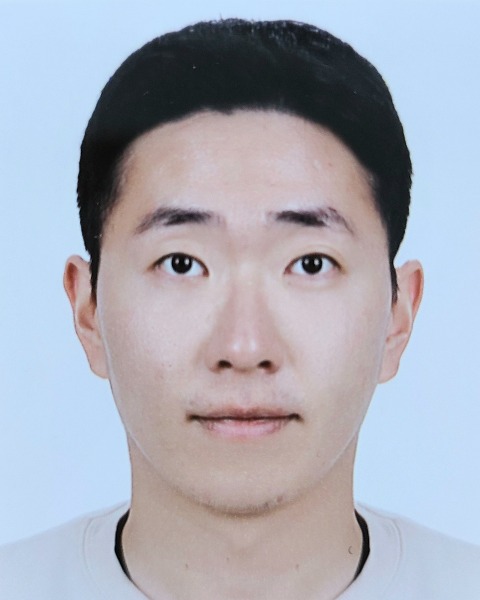Cellular and Molecular Bioengineering
(D-136) A novel DNA double-strand breaks biosensor based on fluorescence resonance energy transfer
Thursday, October 12, 2023
9:30 AM - 10:30 AM PDT
Location: Exhibit Hall - Row D - Poster # 136

Jung-Soo Suh, BS
phD Candidate
Pusan National University, United States- TK
Tae-Jin Kim
Associate professor
Pusan National University, United States
Presenting Author(s)
Primary Investigator(s)
Introduction:: Revealing the spatiotemporal behavior of DNA double-strand breaks (DSBs) is crucial for understanding the processes of DNA damage and repair. Traditionally, γH2AX and DNA damage response (DDR) factors have been used to detect DSBs using classical biochemical assays, such as antibody-based immunostaining. However, a reliable method to visualize and assess DSB activity real-time in living cells is yet to be established. Herein, we developed a novel DNA double-strand breaks biosensor (DSBS) based on fluorescence resonance energy transfer (FRET) by employing the H2AX and BRCT1 domains. By applying FRET imaging with DSBS, we show that DSBS specifically reacts to drug- or ionizing radiation (IR)-induced γH2AX activity, allowing for the quantification of DSB events at high spatiotemporal resolutions. Taken together, we provide a new experimental tool to evaluate the spatiotemporal dynamics of DNA double-strand breaks. Ultimately, our biosensor can be useful for elucidating the molecular mechanisms underlying DNA damage and repair processes.
Materials and Methods:: Genetically-encoded DNA double-strand breaks biosensor (DSBS) was constructed by adding an H2AX substrate and BRCT1 domain. The DSBS mutant types were generated by site-directed mutagenesis. SnapGene software was used to simulate all cloning and site-directed mutagenesis procedures.
As a means of maintaining the cells during imaging, we used a CO2-independent medium containing 0.5% FBS, 4 mM L-glutamine. Our images were acquired with a Leica DMi8 microscope. We used LAS X software to eliminate the background from the image and acquire ECFP, FRET, and ratio images.
All statistical analyses were performed using GraghPad7.0. Statistical data were expressed as the mean ± standard error of the mean (SEM), and statistical evaluation was performed by unpaired t-test using GraphPad 7.0. Significant differences were determined by p-values.
Results, Conclusions, and Discussions:: A limitation of the current tools for analyzing cell lysates and fixed cells is their inability to provide detailed information about the state of a specimen in real-time. Furthermore, these tools often produce results that are difficult to interpret due to their complexity and may not provide the desired level of accuracy when target proteins are present at low concentrations, as the signal may be weak to detect. The FRET biosensor-based imaging technique provides a powerful tool to address this challenge, as it allows for the direct visualization of DNA double-strand breaks(DSB) events in real-time. This technique is highly accurate, as it uses genetically encoded fluorescent proteins sensitive to environmental changes and provides high-resolution imaging. This tool is able to detect and measure the activity of individual molecules, allowing for a more precise understanding of the DSB processes taking place.
Additionally, this method is non-invasive and can be used to monitor the same cell over time. Furthermore, our biosensor can be used in combination with other techniques, such as microscopy, to provide even more detailed information. The DSB biosensor developed in this study was able to effectively detect and evaluate drug- and radiation-induced DSB activity. By generating and verifying the potential major types of mutant DSBS, WT-DSBS was found to exhibit the best performance. The results presented in this work provide a basis for the development of further novel quantification tools to evaluate the spatiotemporal dynamics and physiology of DNA double-strand breaks and to elucidate the molecular mechanisms of DNA damage and repair processes.
Acknowledgements (Optional): :
References (Optional): :
Materials and Methods:: Genetically-encoded DNA double-strand breaks biosensor (DSBS) was constructed by adding an H2AX substrate and BRCT1 domain. The DSBS mutant types were generated by site-directed mutagenesis. SnapGene software was used to simulate all cloning and site-directed mutagenesis procedures.
As a means of maintaining the cells during imaging, we used a CO2-independent medium containing 0.5% FBS, 4 mM L-glutamine. Our images were acquired with a Leica DMi8 microscope. We used LAS X software to eliminate the background from the image and acquire ECFP, FRET, and ratio images.
All statistical analyses were performed using GraghPad7.0. Statistical data were expressed as the mean ± standard error of the mean (SEM), and statistical evaluation was performed by unpaired t-test using GraphPad 7.0. Significant differences were determined by p-values.
Results, Conclusions, and Discussions:: A limitation of the current tools for analyzing cell lysates and fixed cells is their inability to provide detailed information about the state of a specimen in real-time. Furthermore, these tools often produce results that are difficult to interpret due to their complexity and may not provide the desired level of accuracy when target proteins are present at low concentrations, as the signal may be weak to detect. The FRET biosensor-based imaging technique provides a powerful tool to address this challenge, as it allows for the direct visualization of DNA double-strand breaks(DSB) events in real-time. This technique is highly accurate, as it uses genetically encoded fluorescent proteins sensitive to environmental changes and provides high-resolution imaging. This tool is able to detect and measure the activity of individual molecules, allowing for a more precise understanding of the DSB processes taking place.
Additionally, this method is non-invasive and can be used to monitor the same cell over time. Furthermore, our biosensor can be used in combination with other techniques, such as microscopy, to provide even more detailed information. The DSB biosensor developed in this study was able to effectively detect and evaluate drug- and radiation-induced DSB activity. By generating and verifying the potential major types of mutant DSBS, WT-DSBS was found to exhibit the best performance. The results presented in this work provide a basis for the development of further novel quantification tools to evaluate the spatiotemporal dynamics and physiology of DNA double-strand breaks and to elucidate the molecular mechanisms of DNA damage and repair processes.
Acknowledgements (Optional): :
References (Optional): :
